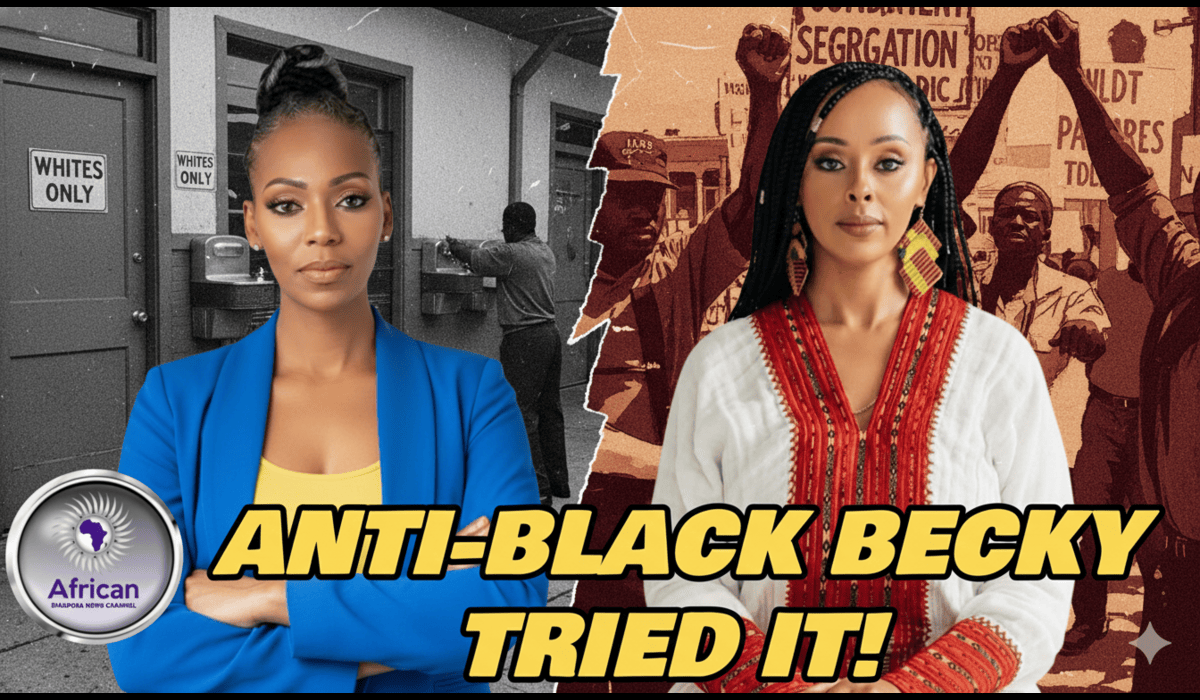FROM IVORY TOWERS TO COMMON GROUND: Reaffirming Canadian Identity
- Anne Thompson
- Canada
- February 11, 2025

FROM IVORY TOWERS TO COMMON GROUND:
Reaffirming Canadian Identity
By Anne Thompson
“An educated population is the foundation of a strong democracy.” These words resonate deeply in the context of Canadian society. Recent events have brought to light a disconcerting reality: our universities are falling short in their role as bridges between academia and society. Two incidents, though months apart, illustrate this failure and its impact on Canadian identity. Canadian universities bear a significant responsibility to bridge the gap between academia and society, fostering a more inclusive and just Canadian identity. I assert they are failing in this duty.
In Montreal, a 13-year-old Black female student was suspended after reacting to a racial slur directed at her by a fellow student. Confronted with this profoundly harmful insult — a word carrying a legacy of oppression — she responded by slapping the boy who used it. While she faced suspension for her actions, the boy received no disciplinary measures. This incident starkly highlights systemic issues within our community mindset, reflected in educational institutions — particularly the failure of university-educated professionals to recognise the profound harm inflicted by words. As Martin Luther King Jr. once said, “Injustice anywhere is a threat to justice everywhere.” This rings true when an assault is not given the weight it deserves.
The psychological impacts of racial slurs are deeply damaging, particularly for young individuals in formative stages of their lives. Such verbal assaults are not mere words; they carry the weight of historical trauma and systemic oppression. The emotional distress caused by racial slurs can lead to a range of negative outcomes, including anxiety, depression, and a diminished sense of self-worth. For students like the young girl in Montreal, the school environment becomes a hostile space where their safety and dignity are compromised.
This incident underscores the failure of educational institutions to address and mitigate the harms associated with racial discrimination. When university-trained professionals in our schools fail to respond appropriately to such incidents, they send a message that this behaviour is tolerable. This lack of accountability perpetuates a cycle of harm, where victims are not only left to cope with the immediate emotional fallout, they must also navigate an environment that does not protect or support them. The lack of equitable disciplinary measures for the boy highlights a systemic bias that often prioritises sweeping issues under the rug, maintaining the status quo façade of harmony, over justice and equity.
The broader societal implications of such incidents are equally concerning. Educational institutions are meant to be spaces of learning, growth, and development. When they fail to address racial discrimination adequately, they falter in their mission to cultivate a just and inclusive society. This neglect not only harms individual students but also undermines the values of equality and respect that should be at the core of our educational systems. When universities fail in their mission, they weaken the pillars that support our democratic society, raising concerns about the future of our nation’s integrity. By failing to instill equitably just behaviour in university graduates and the general public, universities contribute to the perpetuation of systemic racism, affecting generations of students and the broader community.
These failures aren’t isolated incidents; they illustrate a pervasive disconnect between our educational institutions and the society they serve. Separately, controversy erupted over the revelation of the BIPoC Lounge at the University of Winnipeg. The lounge became a flashpoint for misunderstanding and misrepresentation, with some individuals still attempting to exploit the situation. The uproar about the existence of the lounge indicates a deeper problem: once again, a disconnect between universities and the broader public.
Humans are naturally curious — we want to understand the reasons behind almost everything we encounter. When universities fail to explain why they are doing something, they create a vacuum that can be filled with misinformation and suspicion. The controversy over the BIPoC Lounge arose, in part, because of a lack of transparency and communication. Without understanding the purpose and intent behind the lounge, the public was left to speculate, often influenced by those eager to sow discord for personal or political gain. Had universities proactively engaged with the community, explaining the why behind the lounge, much of the misunderstanding and resultant uproar could have been avoided.
In recent years, the creation of exclusive spaces for marginalised groups at universities has gained traction, with the intention of providing support and fostering community. These spaces aim to address the unique challenges their members face. While the intentions behind these spaces are commendable, they might inadvertently perpetuate the very behaviours they aim to oppose.
The purpose of exclusionary spaces like the BIPoC Lounge is to offer a safe haven where marginalised groups can find solidarity and healing. These spaces acknowledge the historical and systemic inequities that these communities face and aim to provide a supportive environment free from the pressures of the dominant culture. While the goal is to foster inclusivity and understanding by recognising the specific needs and challenges of these groups, it’s important to recognise that not all safe havens are inherently exclusionary. Without proper guidance and community outreach, these exclusionary spaces can unintentionally mirror the very divisions they seek to overcome, potentially hindering broader societal cohesion.
Spaces like the BIPoC Lounge at the University of Winnipeg are more than just rooms—they’re sanctuaries. They offer students who are Black, Indigenous, or People of Colour a place to unwind, connect, and simply be themselves. In a university setting that can sometimes feel overwhelmingly uniform, having a dedicated spot where your experiences are understood without explanation is incredibly grounding.
These lounges buzz with conversations that might not happen elsewhere on campus. They’re hubs for cultural exchange, where traditions are celebrated, and stories are shared freely. It’s about fostering a sense of belonging and community, which can boost confidence and academic engagement. When you feel seen and supported, it’s amazing how much more vibrant your university experience becomes.
There’s also the aspect of mental wellbeing. Navigating higher education comes with its fair share of stress, and that’s often amplified for students facing systemic challenges or microaggressions. An exclusionary space like the BIPoC Lounge provides relief — a place to decompress among peers who just get it. That kind of support network is invaluable and can make a real difference in someone’s academic journey.
These spaces highlight the university’s commitment to diversity and inclusion. They can spark important conversations campus-wide, encouraging all students to engage with and learn from different cultures and perspectives. It’s a step towards a more empathetic and understanding community.
A singular step, yes — is that where their efforts should end? This approach may inadvertently perpetuate the very divisions it seeks to heal and reinforce historical injustices. The saying “imitation is the sincerest form of flattery” suggests that mimicking behaviour acknowledges its value. Historically, as is true today, segregation was a tool of oppression used to marginalise and disenfranchise. Movements towards integration aimed to break down barriers and encourage unity across different groups. Some view the establishment of only exclusive spaces as a step back from these ideals, questioning whether they align with the long-term goal of societal cohesion and mutual understanding.
By solely supporting these unguided exclusionary spaces today without community outreach, especially when addressing social constructs, like race, gender, sexuality – even with the best intentions – we risk mirroring and therefore tacitly agreeing with and reinforcing this past unjust behaviour. From my own experiences, I’ve seen such a space become an arena for bellyaching and blame-laying, with little focus on finding solutions or fostering collaboration. Without constructive direction, these spaces risk reinforcing divisions rather than healing them.
There’s an old saying: “We’re all paddling the same canoe.” In the Canadian context, this embodies the spirit of unity and cooperation. Segregating ourselves — even voluntarily — might offer immediate comfort but doesn’t necessarily solve the underlying issues. It’s like paddlers in a leaky canoe each retreating to separate ends; the water continues to rise, and sooner or later, we all sink together.
Imagine a parent deciding that the best way to end sibling squabbles is to give each child their own playroom. It might keep the peace temporarily, but it doesn’t teach them to understand or respect each other. They’re stacking up walls of Lego when they should be building bridges together. In society, this approach risks creating more divisions and less understanding — treating symptoms rather than curing the underlying ailment. The impact of exclusive spaces is complex: while they support marginalised groups, they fail to foster the mutual understanding necessary for long-term societal change.
While these exclusive spaces can be beneficial, the parent also understands the importance of family unity, shared community values, and experiences. To nurture a sense of togetherness and mutual understanding, the parent establishes a family room where everyone can come together, interact, and bond. This family room becomes a universal space for open dialogue — regulated for respect and tolerance — shared activities, and collaboration, helping the children appreciate each other’s unique perspectives and fostering a cohesive family dynamic.
If the parent were to only focus on the exclusive spaces for each child without providing a shared space, it might lead to a sense of isolation and division among the siblings. They might miss out on the valuable lessons and empathy gained from interacting with one another and working through differences together.
A good parent also knows that their role doesn’t end within the confines of the home. While exclusive spaces cater to individual needs, the parent understands the importance of community. Just as a family might visit a public park to interact with the broader community, universities can create opportunities for their members to engage with society beyond the campus.
Imagine the family enjoying their exclusive spaces at home, where they feel safe, supported, and understood. Recognising the importance of connecting with the wider community, the parents take the family to the park, where they interact with other families, participate in community events, and build relationships with neighbours. These interactions enrich their experiences, broaden their perspectives, and contribute to a stronger, more inclusive community. Just as the family benefits from shared spaces and community engagement, universities should extend beyond exclusive spaces to foster inclusivity campus-wide and within the broader society.
Beyond the immediate effects, there’s the concern about reinforcing a sense of otherness — treating people as inherently different or alien. Exclusive spaces might unintentionally signal that integration is neither possible nor desirable. If segregated areas become the primary places where BIPoC students gather, it could inadvertently limit their exposure to diverse perspectives and reduce opportunities for meaningful interactions. This segregation hinders the development of a fully integrated university experience, essential for breaking down prejudices and fostering mutual understanding.
Research on the impact of exclusive spaces is nuanced and context-dependent. While evidence supports the benefits of segregated spaces, some educational scholars argue that these environments might unintentionally reduce opportunities for cross-cultural dialogue. For instance, if students predominantly engage within their own communities, opportunities for broader dialogue and understanding might diminish with the unintentional reduced interaction between diverse groups. This self-segregation could feed into a victimhood mentality or a sense of moral high ground — sorry, I’ve seen this happen too.
These two incidents raise pressing questions about who we are as Canadians and the values we stand for. At a time when global narratives are shifting and external pressures mount, it’s crucial for Canada to reflect deeply on its identity. “O Canada, we stand on guard for thee” — but how well do we truly know the Canada we’re defending? Canadian identity has often been associated with inclusivity, multiculturalism, and respect for diversity and for the rule of law. Yet, these examples reveal gaps between our ideals and reality.
The existential threats aren’t just external but internal — manifesting in how we address or ignore systemic injustices within our borders. To know who we are, we must confront these uncomfortable truths head-on. Recognising and addressing such incidents is essential in upholding an identity that is authentic and just.
The current climate in Canada is one of unrest and discord, with systemic inequalities prompting widespread calls for justice. Incidents like the one involving the high school student serve as stark reminders of the work that remains. Additionally, the uproar caused by agents provocateurs over the establishment of the BIPoC Lounge at the University of Winnipeg highlights the disconnect between universities and the broader public. Universities, as pillars of enlightenment and progress, have a responsibility to step beyond their academic silos and actively engage with these pressing societal issues. An educated population, equipped with critical thinking skills and media literacy, is crucial in recognising and countering such incidents.
Post-secondary institutions have long played a leading role in society, serving humanity by finding solutions to the challenges of our world. Not merely ivory towers of academia, they are integral parts of the social fabric, holding a pivotal role in shaping not only minds but also the nation’s ethos. As Asima Vezina, President of Algoma University, articulated, “Universities have the inherent capacity and potential to help society mobilise to address societal issues. They exist to shape the future, not just respond to it.”
Canadian universities have long stood as pillars of education and progress, with an original mission centred on advancing knowledge and shaping informed citizens. Established to serve both individual aspirations and the collective good, these institutions were envisioned as catalysts for social development and innovation. They were tasked with fostering critical thinking, promoting research that addresses societal needs, and preparing students to contribute meaningfully to the nation.
From their inception, Canadian universities bore a significant responsibility to reflect and uphold the values intrinsic to Canadian identity — values such as inclusivity, equity, and respect for diversity. They aimed to bridge the gap between academia and society by engaging with communities, supporting multiculturalism, and advocating for social justice. This commitment extended beyond academics to encompass fostering a sense of civic duty and collective responsibility among graduates.
By embodying these principles, universities were expected to not only educate but also to lead by example, promoting unity and understanding within the broader fabric of Canadian society. Their role was, and continues to be, integral in shaping a nation that values knowledge, inclusivity, and the wellbeing of all its members.
The interconnectedness of ecosystems mirrors the societal connections we need to foster. Just as every creature — every organism — plays a role in maintaining the health of an ecosystem, every individual and institution contributes to the wellbeing of a just society. Universities, communities, and individuals alike must recognise their roles in this intricate web. Universities, in particular, are like the heart of the societal body—they don’t just pump graduates into the world; they are to circulate ideas, values, and innovations that nourish every part of our nation.
Building upon this analogy, if universities fully embraced their role to “circulate ideas, values, and innovations that nourish every part of our nation,” they would effectively immunise community members against divisive influences spread by provocateurs. University graduates — particularly those who become principals and teachers — would be better equipped to recognise and strive for equitable justice in situations like the incident in Montreal. By instilling strong ethical frameworks and a deep understanding of social justice in their graduates, universities can ensure that educational professionals uphold and enact the values of fairness and inclusivity within their schools and communities.
If universities focus solely on conferring degrees without actively engaging with the broader community, they risk becoming detached — a heart that beats in isolation, failing to sustain the body it serves. Universities must recognise their broader role: to circulate the nutrients of knowledge, ethical leadership, and social responsibility that permeate and invigorate the societal body.
Imagine the parent who, keenly aware that attempts to create discord among their children may arise, takes proactive steps to strengthen their familial bonds. This parent fosters an environment of open communication, empathy, and mutual respect, teaching the children to value their unique differences while embracing their shared identity. However, the parent’s efforts don’t stop at the front door. Recognising that a supportive community is vital to their children’s wellbeing, they actively engage with the broader neighbourhood. By building positive relationships with neighbours, participating in community initiatives, and setting an example of constructive behaviour, the parent helps create a more harmonious and inclusive environment.
When external influences — or perhaps a meddlesome neighbour — try to sow seeds of division, the children are not only well-prepared to see through these tactics but are also supported by a community that resists such negativity. They can brush off divisive efforts like water off a duck’s back, remaining united and supportive of one another. The parent’s dedication to improving both the family dynamic and the wider community ensures that attempts to sow hostility have little ground in which to take root.
Just as the attentive parent’s efforts extend beyond the home, universities should actively engage with the wider community. They must recognise the potential for external provocateurs to incite discord not only within their campuses but also in the broader society. By forging strong connections with community members, participating in societal initiatives, and exemplifying constructive behaviour, universities contribute to a more harmonious and inclusive environment for everyone.
Cultivating a campus culture that emphasises critical thinking, open dialogue, and inclusivity equips students with the tools to identify and resist divisive influences wherever they may arise. This holistic approach enables not only students but also the surrounding community to maintain cohesion and focus on collective progress, despite attempts to undermine unity. The university’s wholehearted dedication to enhancing both campus life and the broader societal environment makes it tough for divisive influences to gain any foothold.
To reaffirm a stronger national identity, we must address systemic issues collaboratively, acknowledging that the wellbeing of one group is intrinsically linked to the wellbeing of all. Universities must lead by example, just as parents do within families — bridging gaps and fostering connections that transcend campuses and homes, reaching into the broader community.
In essence, Canadian universities stand at a crossroads. They can continue on a path of isolation — confined within their ivory towers — or they can embrace their vital role in shaping a just and inclusive society. Actively engaging with the broader community, promoting equitable justice, and fostering environments where all voices are heard, universities can help mend the fractures within our nation.
To bridge the gap between academia and society, universities must embrace the concept of third spaces. Coined by sociologist Ray Oldenburg, third spaces refer to social environments separate from the home (first space) and the workplace or school (second space). These are informal public gathering places where people come together to relax, interact, and build community—think cafés, parks, community centres, or libraries.
In the context of universities, third spaces serve as accessible platforms that encourage interaction between the academic community and the broader society. They’re vital for fostering dialogue, collaboration, and mutual understanding outside traditional academic settings. By cultivating these spaces, universities can extend their reach beyond campus boundaries — much like veins carry nutrients from the heart to vitalise the entire body — breaking down barriers and making education and resources more inclusive and engaging for everyone. Creating accessible platforms — through radio stations, community publications, and public events — allows the circulation of ideas and values that strengthen societal bonds. These initiatives not only enrich the community, they also strengthen the university’s position as a driving force for positive transformation.
To truly act as the heart that invigorates our societal body, Canadian universities can and should embrace the creation of accessible third spaces — both physical and virtual — that welcome community involvement. Initiatives could include:
-
University Radio Stations:
-
Transforming campus radio into a platform that involves community members can disseminate knowledge and perspectives more broadly. Featuring local voices, community issues, and collaborative programmes bridges the gap between academia and the public.
-
-
Contributions to Local Community Newspapers:
-
Encouraging faculty and students to write for local papers makes academic insights accessible. It also shows the community that universities are invested in local concerns and willing to contribute expertise for the common good.
-
-
Community Engagement Centres:
-
Establishing physical spaces on campus dedicated to community events, workshops, and dialogues invites the public into the university setting. These centres can host lectures, cultural events, and collaborative projects that involve both students and community members.
-
-
Public Lectures and Workshops:
-
Regularly hosting events open to the public can stimulate ongoing education and engagement. Topics can range from current research to practical skills, appealing to a wide audience.
-
-
Digital Platforms:
-
In today’s connected world, online forums, webinars, and social media can serve as virtual third spaces. Universities can create digital content accessible to anyone interested, regardless of geographical location.
-
Initiatives like these can transform universities into accessible hubs of knowledge and culture. Investing in these spaces not only disseminates knowledge but also cultivate a shared identity rooted in inclusivity, trust, and mutual growth. Encouraging students, faculty, and staff to engage with the broader society through these initiatives drives positive societal change and contributes to the overall wellbeing of all. Just as a family’s visits to the park enhance their connections and experiences, universities’ engagement with the broader community fosters meaningful dialogue, collaboration, and mutual understanding. These actions create a sense of belonging, trust, and inclusivity that extends beyond their campuses, reinforcing the university’s role as a catalyst for positive change.
Additionally, access to university resources, such as libraries and research facilities, can empower community members in significant ways. Individuals seeking legal information or educational advancement can benefit immensely from these resources. Opening their doors to the public allows universities to democratise knowledge, providing access to tools that enable people to address personal and societal challenges effectively. This circulation of information, like a heart pumping knowledge throughout society, much like nutrients vitalising the body, strengthens the entire community.
The heart of the issue is that universities are not fully embracing their role as integral parts of the societal fabric. They’re not sufficiently circulating nourishment to the societal body — while they’re producing graduates, they are not contributing sufficiently to the broader discourse and wellbeing of society.
This lack of engagement can be seen as a form of elitism — reflecting a subtle form of institutional supremacism — where universities remain aloof, disconnected from the communities that surround them. By not sharing their knowledge and not involving the public in important conversations, they perpetuate a divide that hinders progress.
Canadian universities, once envisioned as pillars of progress and inclusivity, have drifted from their crucial role in uniting academia and society. The incidents we’ve explored aren’t mere anomalies but indicators of a deeper disconnect threatening the very fabric of our national identity.
We must confront these shortcomings head-on, recognising that the health of our society depends on the active engagement of our educational institutions. Like attentive parents nurturing their children’s growth, universities have a duty to equip their students — and by extension, the broader community — with the values and tools necessary to navigate and improve our world.
When universities truly embrace their role as the heart of our societal body, they invigorate every part of the nation. Creating and investing in third spaces, making resources accessible, and actively engaging with the community circulate the nutrients of knowledge, ethical leadership, and social responsibility that strengthen us all. Just as every organism in an ecosystem plays a vital role, universities’ actions reverberate throughout society, affecting the health and cohesion of the entire community.
If universities step out of their ivory towers, they can play a pivotal role in our journey toward true inclusivity and justice. Leveraging their unique position and resources, and engaging proactively with their surrounding communities, they can help reshape societal constructs that perpetuate inequality. This means not just acknowledging the challenges faced by marginalised groups but actively collaborating to address them. After all, building longer tables instead of higher walls benefits us all.
Education and awareness campaigns are key in this effort. Curricula that incorporate diverse perspectives, community outreach programmes, and partnerships with local organisations can facilitate meaningful dialogues and foster a culture of inclusion.
As Gandhi wisely said, “Be the change you want to see in the world.” It’s time for universities to fully embody this principle. Moving beyond the outdated mindset of “othering,” we must embrace enlightened inclusivity — evolving from creating spaces that may unintentionally segregate to establishing platforms that unite.
Isn’t it time we evolved from our primitive, cave-dweller mindset that sees physical differences in humans as threatening? Let’s move past divisive constructs and paddle the canoe, together, toward a harmonious future. Working collaboratively, we can build a society that values the interconnectedness of all its members, ensuring a sustainable and just world for everyone.
Let us envision a Canada where universities are not detached ivory towers but vibrant hubs of knowledge and culture — places where inclusivity, trust, and mutual growth are cultivated and thrive. A Canada where the barriers between academia and society dissolve, and education becomes a shared journey that enriches us all.
The call to action is clear: universities must step beyond their traditional roles and actively participate in shaping a just and inclusive society. While they hold the resources, influence, and responsibility to make a profound difference, this mission isn’t theirs alone. It requires the collective effort of educators, students, parents, policymakers — every one of us.
As Canadians, we’re all in the same canoe. It’s time we paddle together towards a future that embodies the values we hold dear. The journey may be challenging, but with unity and determination, we can navigate the waters ahead and reach a destination that reflects the very best of who we are.








